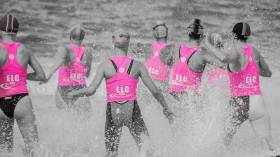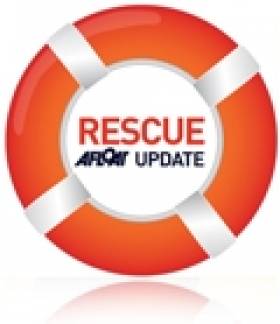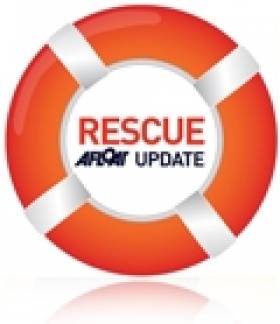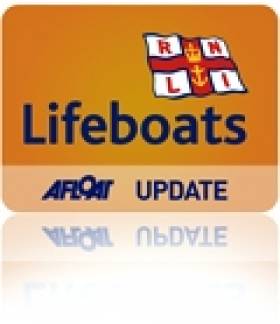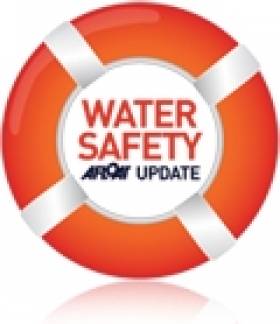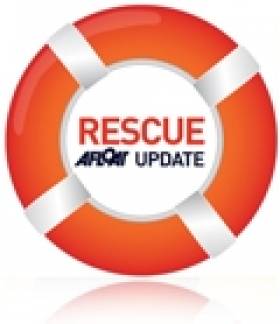Displaying items by tag: lifesaving
Irish Junior Lifesavers Make a Splash at European Championships
With a remarkable skill and determination display, the Irish Water Safety team made a big splash at this year’s European Junior Lifesaving Championships.
Ireland won five gold medals, ten silver medals and nine bronze medals at the championships.
The European Junior Lifesaving Championships were held in Gorzow Wielkopolski and Meidzyzdroje, Poland from 20th August – 27th August.
The team of young lifesavers from Ireland competed against their European counterparts, and their impressive performance earned them a haul of 24 medals and a strong sixth-place finish overall.
Ireland placed sixth in Europe in the overall combined pool and beach competitions.
“We are very proud of the lifesavers who competed against their European counterparts and represented Ireland with such distinction,” commented Simon McGarrigle, Chair of the Water Safety Ireland Sport Commission. “Ireland has a long tradition of competing in international lifesaving competitions, and this year’s success is a testament to all the hard work by the lifesavers and coaches all year round.”
The championships simulate real-life rescue situations that lifeguards can expect to encounter and pit the best Junior Lifesavers from around Europe against each other in a series of gruelling water rescue scenarios in both pool and beach environments. The competition is an annual event open to those aged 18 and under, and it’s organized under the aegis of International Lifesaving Europe (ILSE), which controls the sport worldwide.
The sport of lifesaving exists to encourage lifesavers to maintain the skills, drills, and physical fitness required for performing their lifesaving duties. The sport is truly multi-disciplined and takes place in the pool, on the beach, and in the ocean, with close ties to swimming, athletics, kayaking, rowing, surfing and power boating, and is based on the equipment and skills that lifeguards use to perform lifesaving rescues.
Many of Team Ireland’s Junior Lifesavers will further hone their skills this weekend by taking to the waters for their perspective county teams at the National Junior Open Water Championships in Mullaghmore, Co. Sligo (Saturday 2nd & Sunday 3rd September). Junior lifesaving competitors typically become top Lifeguards, patrolling beaches and pools in Ireland and abroad.
Medal Winners Were:
Gold:
- Leana Liddane won Gold in the Swim Race
- Oisin O’Grady and Ferdia Hayes won Gold in the Board Rescue
- Amy Noble and Leana Liddane won Gold in the Board Rescue
Silver:
- Leana Liddane won Silver in the Board Race
- Leana Liddane won Silver in the Oceanman/Oceanwoman
- Amy Noble, Katie Cotter, Elin Blake and Lily Sheehy won Silver in the Tube Rescue
- Amy Noble, Jamie Flynn, Leana Liddane and Finn Harris won Silver in the Mixed Ocean Relay
Bronze:
- Ferdia Hayes won Bronze in the Oceanman/Oceanwoman
- Jamie Flynn, Charlie Brennan, Oisin O’Grady and Cailim Van Dam won bronze in the Tube Rescue
- Oisin O’Grady, Finn Harris, Jamie Flynn and Cailim Van Dam won bronze in the Beach Sprint Relay
Team Members:
- Leana Liddane - Clare
- Elin Blake - Clare
- Lily Sheehy - Wicklow
- Amy Noble - Wicklow
- Saoirse Dolan - Wicklow
- Katie Cotter - Cork
- Oisin OGrady - Clare
- Ferdia Hayes - Clare
- Cailim Van Dam - Cork
- Finn Harris - Wicklow=
- Charlie Brennan - Wicklow
- Jamie Flynn - Waterford
Team Ireland Win Seven Gold At European Lifesaving Championships
Ireland’s top Lifesavers have won seven gold medals at the European Lifesaving Championships in Belgium.
The Championships simulate real-life rescue situations that Lifeguards encounter and pits the best Lifesavers from around Europe against each other in a series of gruelling water rescue scenarios in both pool and beach environments.
Nineteen countries competed at pool events in Bruges and at beach events in Ostende. Two Irish teams secured a total of twenty-nine medals, 7 Gold; 15 Silver; 7 Bronze (see table below).
“We are absolutely thrilled”, said Gold medal winner Lily Barrett, “competing against the best Lifesavers from nineteen countries is challenging to say the least but we supported each other through every event and our training has now paid dividends with twenty-nine medals in the bag.”
“These are fantastic results”, commented the Chairman of Irish Water Safety’s Sports Commission Clare McGrath, “every single person gave their utmost and I am very proud of them as a team and as individuals. The junior competitors will soon become Lifeguards of the future, patrolling beaches and pools in Ireland and abroad. No other sport gives so much back to a community in terms of safeguarding our population at aquatic environments. I extend my congratulations to the background staff, parents and coaches for all their preparatory work.”
See below for medal table and event descriptions.
RESULTS
Simulated Emergency Response Competition (SERC)
Serc Senior (SILVER): Triona McMenamin, David Butler, Joe Mooney, Katie Shannon
Line Throw Senior (GOLD): David Butler, Joe Mooney
Line Throw Jnr (BRONZE): Tim Collins, Ryan Cotter
Oceanwoman (BRONZE): Roisin Cahill jnr, Lily Barrett snr
Oceanwaman Relay Snr: Katie Shannon, Lily Barrett, Hana Blake, Denise Bolger
Board Rescue Jnr (GOLD): Roisin Cahill, Amy O'Brien; (SILVER): Kai Wilmott, Odhran Savage
Board Rescue Snr (BRONZE): Triona McMenamin, Lily Barrett
Beach Sprint Relay Jnr (SILVER): Amy O'Brien, Aoife Madigan, Aisling Barry, Emer Kelly
Beach Sprint (SILVER): Denise Bolger Snr; (BRONZE): Odhran Savage Jnr
Beach Flags (GOLD): Emer Kelly Jnr
Board Race (GOLD): Lily Barrett Snr
Surf Swim (GOLD): Odhran Savage Jnr
Also Finishing in top 16 -
Nathan Holding, Bill Milne, Ryan Shannon, Aoife Deane, Nicloe Devitt, Marley Haugh, Noel Shannon.
Irish Life Savers Win 51 Medals At World Championships in France
#watersafety – Irish Water Safety Life Savers continue to make great progress on the world stage, competing last month at Rescue 2014: The World Life Saving Championships in Montpelier, France.
Ten years ago at Rescue 04 Team Ireland were delighted to make some semi finals but at Rescue 2014 the Irish squad finished with 51 World medals, countless A and B finals and numerous Irish records to boot!
Teams from 34 nations competed to test their life saving skills in France. The sport is involves life saving skills thought in pools and beaches, and putting them in a race format to compete to be the best life saver.
In particular, Irish youths are ranked ninth in the world. You can read more about how the Irish got on in France here
Clare Lifeguards Set New Records at Lifesaving Championships
#lifeguards – Lifesaving teams from 17 counties competed on Sat 15th Feb 2014 in Irish Water Safety's National Irish Pool Lifesaving Championships. An action-filled day of events saw 240 of Ireland's fittest Lifesavers compete at the University of Limerick's 50-metre pool complex. This year over 100 teams entered from 17 counties around the country - both Ireland and Northern Ireland. Fifteen Irish National Records were broken; 11 new records from Junior age category (13-16) and 4 in Senarios (16+).
"This Annual competition gives the best Lifesavers in Ireland an opportunity to compete in conditions that Lifesavers can encounter in real-life rescue situations. The sport of lifesaving teaches participants the skills necessary to rescue people in distress in water," said Chairman of Irish Water Safety, Breda Collins.
"Many of the competitors, having worked as Lifeguards in pools nationwide, got their chance to pitch their skills against the finest lifesavers in the country," added Collins. "The events are varied and challenging with competitors swimming under immersed obstacles, rescuing "casualties" from the water and skillfully testing a variety of lifesaving skills in the process."
The National Championships are part of Irish Water Safety's (IWS) extensive programme to promote water safety in Ireland with a particular focus on the necessary skills required by pool Lifeguards nationwide. The Championships encourage people to enrol in one of IWS's many courses nationwide in the valuable skills of swimming, rescue and lifesaving. The event promotes the fitness and readiness for action of the lifesavers and demonstrates Lifeguard water rescues to the public.
RESULTS:
Junior Boys: 1st Clare A; 2nd Wexford A; 3rd Sligo.
Junior Girls: 1st Clare A; 2nd Wexford A; 3rd Wicklow.
Senior Men: 1st Clare A; 2nd Waterford A; 3rd Sligo A.
Senior Ladies: 1st Clare A; 2nd Donegal A; 3rd Waterford.
Masters Men: 1st Sligo; 2nd Clare; 3rd Cork.
Masters Ladies: 1st Clare; 2nd Cork;3rd Wicklow.
NEW IRISH RECORDS (description of events below):
100m Manikin Tow with Fins (Boys) Rory McEvoy Clare 1.02.14
100m Manikin Tow with Fins (Girls) Lily Barrett Clare 1.10.47
200m Super Lifesaver (Girls) Lily Barrett Clare 2.44.80
100m Manikin Carry with Fins (Boys) Joseph Mooney Sligo 51.82
100m Manikin Carry with fins (Girls) Georgina Steele Wexford A 1.04.40
50m Manikin Carry (Womens) Lauren Hughes Union (Belfast) 43.18
50m Manikin Carry (Boys) Joseph Mooney Sligo 32.16
50m Manikin Carry (Girls) Georgina Steele Wexford A 40.47
4x25m Manikin Relay (Boys) Clare A 1.24.88
4x25m Manikin Relay (Girls) Clare A 1.31.73
4x25m Manikin Relay (Mens) Clare A 1.24.31
4x50m Medley Relay (Boys) Clare A 1.50.59
4x50m Medley Relay (Girls) Clare A 1.59.34
4x50m Medley Relay (Mens) Clare A 1.46.08
Line Throw (Womens) Wexford 13.13
Junior Lifesaving Event Produces Two Irish Champions
Ireland took two "European Junior Champion" titles in the European Junior Lifesaving Championships, which took place in Riccione, Italy from 6th-8th September. The Championships simulate real life rescue situations that Lifeguards can expect to encounter as Lifesavers and pits the best Junior Lifesavers from around Europe against each other in a series of gruelling water rescue scenarios.
Taking Gold in her event, the Board Race, Lily Barrett from Clare, typifying the split-second reactions necessary for Lifeguards to react in rescue scenarios, made a commanding start in launching her rescue board, paddled the course strongly and finished with a dominant beach run to cross the finish line ahead of some of the fittest junior lifesavers competing on the European circuit today.
Lily also teamed up with Roisin Cahill (also from Clare) to take home two Gold medals for the Board Rescue event, in which one member of the team swims to a buoy, signals ("to be rescued"), and waits to be picked up by the second member of the team on her board. They both paddled powerfully to shore and crossed the finish line on the beach with the board to become European Junior Champions.
A European silver medal was secured by Eoghan Grady (from Mayo) in the "Run-Swim-Run" event in which his strong beach run was followed by a fast swim around marker buoys and back to shore for a second beach run to the finish line for an extremely close finish.
These outstanding performances were complimented by a series of excellent results from the Irish Junior Lifesaving Team overall:
RESULTS INCLUDING COUNTY OF COMPETITOR (event descriptions below):
Board Race:
Lily Barrett (Clare): 1st (European Junior Champion)
Ayesha Garvey (Donegal): 14th
Adam McEvoy (Clare): 10th
Board Rescue:
Lily Barrett (Clare) & Roisin Cahill (Clare): 1st (European Junior Champions)
Adam McEvoy (Clare) & Rory McEvoy (Clare): 4th
Run- Swim - Run:
Lily Barrett (Clare): 4th
Ayesha Garvey (Clare): 14th
Katie Shannon (Clare): 18th
Eoghan Grady (Mayo): 2nd
Rory McEvoy (Clare): 6th
Hugh Mc Mahon (Clare): 14th
Flags
Adam Mc Evoy (Clare): 8th
Cameron Steel (Wexford): 13th
Rescue Tube Rescue
Ciara Gleeson, Ayesha Garvey, Katie Shannon & Lily Barrett: 8th
Hugh McMahon (Clare), Cameron Steel (Wexford), Adam McEvoy (Clare),Eoghan Grady (Mayo): 10th
European Lifesaving Championships Silver & Bronze for Ireland
#lifesaving – Ireland has won a silver and bronze medals in the European Lifesaving Championships in the towns of Noordwijk and Den Haag, Holland.
The Team Bronze was won in the Simulated Emergency Rescue Competition by Triona Mc Menamin from Letterkenny, Co. Donegal, Cormac O Sullivan, Bernard Cahill, Dylan Barrett who all hail from Ennis Co. Clare.
Bernard Cahill and Dylan Barrett also won an individual Silver and Bronze respectively in the Run -Swim-Run Competition, which simulates a rescue from the water.
These results reflect the excellent work done at local and national level in Lifesaving sports for a number of years now.
What makes this success special is the great work undertaken by the volunteers who teach and train these young athletes.
The Championships simulate real life rescue situations that these Lifesavers can expect to encounter as Lifeguards. To secure six International medals at European level is testimony to how hard they trained and how well they prepared as individuals and as a team.
Lifesaving sport is primarily intended to encourage lifesavers to develop, maintain and improve the essential physical and mental skills needed to save lives in the aquatic environment. Lifesaving competitions consist of a variety of competitions to further develop and demonstrate lifesaving skills, fitness and motivation.
Children around Ireland as young as eight can get involved in a series of progressive Lifesaving classes taught by Irish Water Safety, through the www.iws.ie website and hopefully go on to represent their country in these competitions.
#RNLI - Portaferry RNLI is looking for new volunteer crew members to join its search and rescue service in Co Down.
The station currently has 17 lifeboat and two shore crew to cover its inshore service on Strangford Lough but is now calling on new volunteers to come forward and find out how they can get involved in helping the charity continue to save lives at sea.
To that end, the station will be hosting two open days early next month for all interested candidates to learn more.
"We are looking for anyone aged 17 years and over who is willing to offer some of their free time to join what I believe to be, one of the most exhilarating and rewarding voluntary services that is out there," said lifeboat operations manager Brian Bailie.
"Every volunteer receives first class training from the RNLI and learns new skills which can benefit them in many walks of life. Lifeboat crew members need to have a reasonable level of fitness, have good eyesight and not be colour-blind."
He added: "Anyone who would like to volunteer but feels they would not meet the requirements for lifeboat crew should in no way be put off, as shore crew also play an essential role in the launch and recovery of the lifeboat when it goes on service."
For anyone who feels they have the time and commitment to volunteer for the charity which is on call 24 hours a day, 365 days a year, is asked to email Brian at [email protected].
Alternatively, prospective volunteers can come along to the station’s open days from 7-9pm next Tuesday 7 May or from 2-4pm next Saturday 11 May.
Elsewhere in Northern Ireland, primary school children will have the opportunity to hit the surf with RNLI lifeguards over the next month.
The charity’s ‘Hit the Surf’ programme runs from 7 May to 7 June on the East Strand Beach in Portrush.
Aimed at primary five to seven pupils aged eight to 11, the programme - which is expanding to accommodate more schools this year - gives children a unique opportunity to gain practical lessons in lifesaving and beach safety. All equipment is provided free of charge.
Each session lasts two-and-a half-hours and includes a theory lesson on staying safe at the beach, the role of beach lifeguards and the RNLI, and detailed information on flags and rip currents.
There are practical lessons in lifesaving and surf based skills, while lifeguards aim to build pupils confidence in the sea. Children also learn about the local hazards and the beach environment.
Sessions are still available for schools who want to book pupils in. For more information contact Jessica on 0777 441 4208 or email [email protected]
Last year RNLI lifeguards located on beaches in Co Down and along the Causeway Coast responded to 158 incidents and assisted 176 people who found themselves in difficulty.
Irish Lifesaver Appointed Chief Referee for Euro Champs
#watersafety – An Irishman has been appointed Chief Referee for the European lifesaving Championships 2013.
Irish competitors and officials are highly respected at the European Surf Lifesaving Championships, an event that tests the endurance of the fittest Lifeguards in Europe.
Daniel Wrafter, originally from Grantstown Park in Waterford and now living in Kilmainham, Dublin 8 is an experienced Internationally qualified A-Level referee.
A long time competitor himself at national and international level, Daniel now fulfills the position as Chief Referee for the Ocean Events and Deputy Referee for the Pool Events at the European Lifesaving Championships on 16th to 18th August 2013 in The Hague, Netherlands.
The Council of Irish Water Safety fully supports Daniel's nomination which it regards as a reflection on the high standards in Ireland both in terms of training competitors and officials.
IWS extends congratulations to Daniel and its appreciation to the International Lifesaving Federation of Europe's College of Referees.
Marine Notice: Annual Servicing of Lifesaving Equipment
#MARINE NOTICE - The latest Marine Notice from the Department of Transport, Tourism and Sport (DTTAS) reminds vessel owners and all seafarers of the requirement to service their lifejackets, liferafts and other safety equipment.
All items that form part of a vessel's lifesaving appliances, from SOLAS and MED inflatable liferafts to inflated and rigid inflated rescue boats, inflated boats, inflated life jackets (including immersion suits complying with the requirements for lifejackets), hydrostatic release units (HRUs) and marine evacuation systems are required to be serviced at intervals not exceeding 12 months.
Annual servicing of inflatable liferafts, HRUs and marine escape systems must be carried out by an approved liferaft service station which has been formally appointed by the manufacturer of the approved equipment.
The names and contact details of the currently approved liferaft service stations in Ireland and which have been approved by the Minister for Transport, Tourism and Sport are listed in the appendix on Marine Notice No 53 of 2012, a PDF of which is available to read or download HERE.
Annual servicing of inflated lifejackets (including immersion suits complying with the requirements for lifejackets), inflated boats, inflated and rigid inflated rescue boats must be carried out by a service station which has been formally appointed by the manufacturer of the approved equipment.
Emergency repairs to a vessel’s inflated and rigid inflated rescue boats and inflated boats may be carried out on board that vessel, but permanent repairs shall be effected at a service station ashore as soon as practicable. This notice supersedes Marine Notice No 19 of 2010.
Clare Lifesaving Duo Win Gold for Ireland at European Championships
#lifesaving – Ireland has won Gold in the European Lifesaving Championships in Jönköping, Sweden. This outstanding achievement has been achieved by Bernard Cahill and Rory Sexton from Clare. They won their medals in the team beach event which simulates a rescue from the water called a Board Rescue.
Bernard also won a Gold medal in Run Swim Run event whilst his teammate Rory Sexton won silver. Bernard then went on to win another Silver in the individual Rescue Board Race. Meanwhile in the Girls Run Swim Run, Lily Barrett from Ennis took a bronze medal. This is the first time that Ireland has made such an achievement, overall we won the beach competition. We were 4th Overall in the Boys Competition at beach and pool events and we are now ranked 8th overall in Europe. These results reflect the excellent work done at local and national level in Lifesaving sports for a number of years now.
What makes this success special is the great work undertaken by the volunteers who teach and train these young athletes.
The Championships simulate real life rescue situations that these Lifesavers can expect to encounter as Lifeguards. To secure six International medals at European level is testimony to how hard they trained and how well they prepared as individuals and as a team.
Lifesaving sport is primarily intended to encourage lifesavers to develop, maintain and improve the essential physical and mental skills needed to save lives in the aquatic environment. Lifesaving competitions consist of a variety of competitions to further develop and demonstrate lifesaving skills, fitness and motivation. Children around Ireland as young as eight can get involved in a series of progressive Lifesaving classes taught by Irish Water Safety, through the www.iws.ie website and hopefully go on to represent their country in these competitions.


























